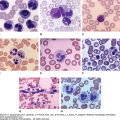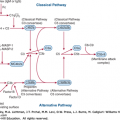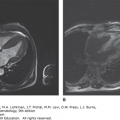INTRODUCTION
SUMMARY
Hematology is a unique science in that its complexity is readily accessible via the examination of blood and marrow. The ease with which a complete blood count (CBC) may be obtained also leads to frequent observation of values which fall outside the reference range. Such perturbations may be the sign of something as ominous as acute leukemia, or as inconsequential as the common cold. That such changes might generate considerable anxiety, both for patients and providers, is not surprising given the plethora of life-threatening diseases that often manifest classic CBC findings.
This ever-increasing dependence on labs as screening tools generates a seemingly endless supply of “abnormal” results, often triggering hematologic consultation. Electronic medical records (EMRs), as repositories for this ever-growing data, serve as invaluable tools in evaluating the chronicity and trend of such findings.
In this chapter, we outline our approach to dealing with these common queries. The individual epidemiology, pathogenesis, and treatment of such disorders are covered comprehensively and with clarity within their corresponding chapters and are not repeated here. Rather, what we describe is our thought process in approaching such questions and narrowing the broad differential to that which is reasonable and probable.
Acronyms and Abbreviations:
AC, anticoagulation; ACD, anemia of chronic disease; ADAMTS13, a disintegrin and metalloprotease with a thrombospondin type 1 motif member 13; ALC, absolute lymphocyte count; ALL, acute lymphoblastic leukemia; ANC, absolute neutrophil count; APS, antiphospholipid antibody syndrome; BCR-Abl, breakpoint cluster region-Abelson; CBC, complete blood count; CD, clonal designator; CLL, chronic lymphocytic leukemia; CML, chronic myelogenous leukemia; CMML, chronic myelomonocytic leukemia; CNL, chronic neutrophilic leukemia; CRP, C-reactive protein; DIC, disseminated intravascular coagulation; DVT, deep venous thrombosis; EDTA, ethylenediaminetetraacetic acid; EMR, electronic medical record; EPO, erythropoietin; ER, emergency room; ESR, erythrocyte sedimentation rate; ET, essential thrombocythemia; HELLP, hemolysis, elevated liver enzymes, low platelet count; HHT, hereditary hemorrhagic telangiectasia; HIT, heparin-induced thrombocytopenia; HUS, hemolytic uremic syndrome; ITP, immune thrombocytopenia; JAK2, Janus kinase 2; LDH, lactate dehydrogenase; LGL, large granular lymphocytic; LMWH, low-molecular-weight heparin; MCH, mean corpuscular hemoglobin; MCV, mean corpuscular volume; MDS, myelodysplastic syndrome; MGUS, monoclonal gammopathy of undetermined significance; MPN, myeloproliferative neoplasm; MTHFR, methylenetetrahydrofolate reductase; nRBC, nucleated red blood cell; NSAID, nonsteroidal antiinflammatory drug; p50, partial pressure required to achieve 50 percent saturation; PCR, polymerase chain reaction; PE, pulmonary embolism; PFA, platelet function analysis; PMN, polymorphonuclear neutrophil; PNH, paroxysmal nocturnal hemoglobinuria; PT, prothrombin time; PTT, partial thromboplastin time; PV, polycythemia vera; RBC, red blood cell; RIPA, ristocetin-induced platelet aggregation; RT, reptilase time; SPEP, serum protein electrophoresis; TT, thrombin time; TTP, thrombotic thrombocytopenic purpura; UPEP, urine protein electrophoresis; VWD, von Willebrand disease; WBC, white blood cell.
LEUKOPENIA
Detection of a low white blood cell (WBC) count is a common reason for hematologic consultation. Clinicians and patients are attentive to early signs of marrow pathology, such as myelodysplastic syndrome (MDS), although such diseases are found only in a minority of referrals. Nevertheless, the severity of potential pathology mandates leukopenia be taken seriously and approached thoughtfully.
One begins by determining if the predominant finding is neutropenia, lymphopenia, monocytopenia, or all of the above.
The potential causes of neutropenia are diverse and include congenital disorders, autoimmune disorders, infections, nutritional deficiencies, medications, and, of course, hematolymphoid neoplasias. These are discussed in detail in Chap. 65.
Degrees of neutropenia may be broadly classified as mild (absolute neutrophil count [ANC] 1000–1500 cells/μL), moderate (ANC 500–1000 cells/μL), or severe (ANC <500 cells/μL).
The three most important historical details are the degree of neutropenia, acuity of onset, and presence or absence of associated symptoms. Each is considered individually and within the context of other findings.
The degree of neutropenia is informative. There is no specific ANC threshold that mandates evaluation. In general, mild neutropenia with preservation of other lineages in the asymptomatic patient may be observed, whereas moderate or severe neutropenia increases the risk of infection and probability of underlying pathology. The degree of neutropenia is not a priori a measure of its potential consequences. For example, patients with chronic idiopathic neutropenia may have blood neutrophil counts approaching zero with no symptoms or increased risk of infection.
The acuity of neutropenia is quite helpful, and the advent of the electronic medical record (EMR) allows for the rapid evaluation of such trends. In acute onset neutropenia, it is useful to inquire about recent infections and new medications. The latter is often an important clue. The number of medications that might cause neutropenia is vast, and some representative agents are shown in Chap. 65, Table 65–1. The temporal association of new medications with cytopenias is often the strongest evidence of causality. If there is suspicion for drug-induced neutropenia, the offending medication should be discontinued. If this is not possible, switching to a congener with a different chemical structure should be strongly considered.
In cases of chronic neutropenia, one should explore possibilities such as congenital neutropenia, chronic idiopathic neutropenia, infection particularly hepatitis and HIV, and autoimmune disorders. With respect to the latter, systemic lupus erythematosus is important to be cognizant of, as nearly half of such patients will be leukopenic. Thus symptoms of photosensitivity, arthralgia, and recurrent pregnancy morbidity should trigger rheumatologic consultation.
Hematolymphoid neoplasias may present with either acute or chronic cytopenias. When considering the presence of malignancy, one should attempt to identify other concerning findings, such as other cytopenias, adenopathy, fever, organomegaly, or unintentional weight loss, in addition to isolated neutropenia.
Lymphopenia, defined as an absolute lymphocyte count (ALC) less than 1500 cells/μL, may be seen in a variety of settings. One should begin by assessing the chronicity and severity of lymphopenia, along with a thorough physical examination. The latter should focus on any evidence of splenomegaly, adenopathy, or evidence of fungal infection, such as oral candidiasis. The numerous inherited and acquired causes of lymphopenia are noted in Chap. 79.
Notably HIV infection should be excluded in the lymphopenic patient. Similarly, a concomitant infection with a number of viral or bacterial pathogens may result in lymphopenia. One of the most common iatrogenic causes of lymphopenia is the use of glucocorticoids. Alcoholism may also result in lymphopenia.
Although monocytopenia is described in a number of settings (Chap. 70), the most notable entity to exclude is hairy cell leukemia. Although rare, this B-cell lymphoproliferative disorder presents with constitutional symptoms, splenomegaly, and the majority of patients are monocytopenic as well as neutropenic (Chap. 93). Thus, in a patient with compatible symptoms and monocytopenia, even without classic hairy cells on the blood film, it is worthwhile performing flow cytometry with attention to hairy cell markers, including clonal designator (CD) 11c and CD103.
Severe monocytopenia may rarely be seen in the MonoMAC (monocytopenia and mycobacterial infection) syndrome. Described in 2010, it is associated with extreme monocytopenia or amonocytosis, may be associated with mycobacterial and viral infections and results from a mutation in the GATA-2 gene. It has a high risk of progressing to MDS or acute myelogenous leukemia (Chap. 70).
ANEMIA
The underlying pathophysiology of the anemia must be identified. We use three interacting analytic tools:
Standard hematologic indices, particularly mean corpuscular volume (MCV) and mean corpuscular hemoglobin (MCH).
Kinetic analysis (Chaps. 32 and 33) seeking to determine if the underlying cause is a defect in red blood cell (RBC) production, an increase in RBC destruction (hemolysis), or blood loss. Humans replace 1 percent of their RBCs per day (Chap. 32). Any decrease in hemoglobin greater than 1 percent/day implies the patient is bleeding, hemolyzing, or both.
An awareness of patient demographics. For example, a pediatric practice may place hemoglobinopathies high on the differential, whereas a geriatric internal medicine practice will commonly encounter anemia of chronic disease and iron deficiency.
The history and medical records are important tools in identifying the severity and duration of anemia. The timeline of development is crucial: if it has been lifelong, congenital causes are likely. If not, then the events surrounding the development of anemia may also provide clues, as well as indicate if additional abnormalities in the other cell lines are present.
The physical should be a comprehensive exam with particular attention to lymphadenopathy, liver/spleen size, and assessment of cardiovascular status. Laboratory analysis requires a current complete blood count (CBC) and a blood film. Critically, one cannot rely on an isolated hemoglobin value without the remainder of the CBC. An absolute reticulocyte count, corrected for the degree of anemia, is also required. A comprehensive metabolic panel as well, including renal and liver function tests, is useful in narrowing the differential.
If the anemia is of recent origin with a normal MCV and a low corrected absolute reticulocyte count (meaning there is a production defect), then anemia of chronic disease (ACD) (Chap. 37) is likely. Additional labs evaluating inflammatory activity, such as ferritin, erythrocyte sedimentation rate (ESR), and C-reactive protein (CRP), may be helpful. If there is a RBC production defect, but no evidence of inflammatory disease, it is important to exclude renal dysfunction. In this setting, we evaluate serum creatinine and erythropoietin levels.
One must maintain a high suspicion for iron deficiency, even in the setting of a normal MCV and blood film (Chap. 43). Useful items include a ferritin, transferrin saturation, and clinical evaluation for blood loss. Conversely, consider a patient in which the hemoglobin is 10.5 g/dL, MCV 64 fL, MCH 19 pg, and absolute reticulocyte count is elevated to 180,000. The blood film shows microcytic, hypochromic RBCs with occasional target cells. Although iron levels should be determined, thalassemia will be much more likely (Chap. 48).
If the MCV is greater than 100 fL and the reticulocyte count suggests a production defect, examine both the WBC and platelet number and morphology. If either is abnormal, then primary marrow disorders such as MDS become more likely than nutritional deficiencies such as vitamin B12 or folate. A marrow biopsy should be performed in this setting.
If the rate of hemoglobin fall is greater than 1 percent/day, and the corrected reticulocyte count is elevated, bleeding or hemolysis is occurring. One should search for specific RBC morphologic anomalies on the blood film. If spherocytes, fragmented cells, or Heinz bodies (Chaps. 2 and 31) are present, then hemolysis is likely. We obtain a haptoglobin, indirect bilirubin, lactate dehydrogenase (LDH), and a direct Coombs study. The history is informative. If the hemolysis is lifelong, then RBC intracorpuscular defects (either of hemoglobin, membrane, or enzymes [Chaps. 46, 47, and 49]) are likely. If the hemolysis is recent, then acquired extracorpuscular causes, such as autoimmune hemolysis, parasitic disease, renal/hepatic disease, or hypersplenism, are likely (Chaps. 51 to 54 and 56).
If the anemia is persistent, symptomatic, and the aforementioned workup has not provided a diagnosis, then marrow biopsy and aspiration are indicated.
THROMBOCYTOPENIA
Whereas the consultative approach to thrombocytosis is relatively straightforward, the opposite is true for thrombocytopenia. The clinical situation may be urgent and the differential diagnosis, upon which management is based, is huge (Chap. 117). It is helpful to think of the underlying cause(s) mechanistically:
Platelet production is low: The marrow is replaced (leukemia, lymphoma), empty (aplastic anemia), or ineffective (MDS, vitamin B12 deficiency).
Platelets are being rapidly removed from circulation: Thrombotic microangiopathy (thrombotic thrombocytopenic purpura [TTP], hemolytic uremic syndrome [HUS], disseminated intravascular coagulation [DIC], hemolysis, elevated liver enzymes, low platelet count [HELLP]) or autoimmune platelet removal (immune thrombocytopenia [ITP], drug-induced thrombocytopenia, heparin-induced thrombocytopenia [HIT]).
Platelets are being sequestered: Massive splenomegaly or hemangiomas.
If one encounters a new finding of severe thrombocytopenia, one must immediately review the blood film for the presence of microangiopathy. If present, concern is raised for TTP, and immediate intervention is required (Chap. 132).
The history provides key information. Comorbid autoimmune and lymphoproliferative diseases may be associated with ITP. Culprit drugs, such as heparin or quinidine, must be explored. Hepatic disease is a common cause of thrombocytopenia and should be queried. The EMR should be used to explore the temporal nature of the thrombocytopenia and other associated CBC anomalies. The physical exam should pay special attention to petechiae, oral blood blisters, ecchymoses, adenopathy, and organomegaly. In reviewing the blood film, one should exclude spurious thrombocytopenia (Chap. 117) that may include ethylenediaminetetraacetic acid (EDTA)-induced platelet clumping (pseudothrombocytopenia), presence of megathrombocytes that are too large to be recognized as such by automatic cell counters, or adherence of platelets to neutrophils (platelet satellitism) which can be ameliorated by using sodium citrate as an anticoagulant. Next, one should check for the presence of microangiopathy which, if present, would lead to consideration for TTP, HUS, or DIC. Spherocytes and polychromasia would raise the possibility of combined ITP and autoimmune hemolytic anemia, otherwise known as Evans syndrome. Giant hypogranulated platelets raise consideration of MDS, and more than six lobed polymorphonuclear neutrophils (PMNs) associated with an MCV >115 suggest vitamin B12 or folate deficiency (Chap. 41). In a patient with newly developed isolated thrombocytopenia, megathrombocytes, platelets greater in diameter than one-third of a red cell diameter (>2.5 μM), are the parallel of the reticulocyte count. More than 10 percent such platelets are suggestive of immune platelet destruction with a compensatory increase in thrombopoiesis.
In the case of isolated thrombocytopenia, the most common cause is autoimmune thrombocytopenia. ITP may also be drug-induced. An important feature of autoimmune thrombocytopenia is the absence of splenomegaly, thus an enlarged spleen points to other diagnoses such as lymphoproliferative disease, hypersplenism, or lupus. Approximately 25 percent of patients with the antiphospholipid antibody syndrome have mild thrombocytopenia (50 to 130 × 109/L). Bleeding is not a feature of this phenomenon and it may be confused with autoimmune thrombocytopenia. HIT is an event seen in hospitalized patients or those receiving heparin through home care (Chap. 118). The thrombocytopenia can be mild (e.g., 20 to 100 × 109/L) and bleeding is unusual. It usually occurs 5 to 10 days after exposure to heparin and is associated with both venous and arterial thrombosis. Often, the patient may be quite ill, postoperative, and have other plausible explanations for thrombosis, thus requiring a high index of suspicion. It is less frequent with low-molecular-weight heparin (LMWH) preparations, but still can occur in that setting. The specifics of diagnostic tests and management are discussed in Chap. 118.
With baseline data from history, exam, and routine labs, a preliminary analysis should be performed to focus subsequent specialized testing. For example, in a patient with CNS symptoms, microangiopathic hemolysis, and an elevated serum creatinine, a disintegrin and metalloprotease with a thrombospondin type 1 motif member 13 (ADAMTS13) activity level should be ordered in addition to instituting prompt plasmapheresis for the tentative diagnosis of TTP. In a patient who received heparin 5 days prior during cardiac surgery, HIT is considered and an immunoassay for antiplatelet factor 4 obtained.
PANCYTOPENIA
The presentation of a patient with new-onset pancytopenia requires immediate medical attention. In formulating an approach to a patient who presents with a combination of anemia, thrombocytopenia, and leukopenia it is useful to think of the pathophysiology in mechanistic terms. It is also important in constructing a differential diagnosis to determine whether the leukopenia is balanced, neutropenia, or lymphopenia.
The blood counts may be low because the normal hematopoietic marrow has been replaced (fibrosis, infiltrative malignancy), is absent (aplastic anemia), or is ineffective (MDS, vitamin B12 deficiency). Hypersplenism can also result in the rapid removal of cells from the blood, for example in the context of a malignant lymphoma.
The history provides several critical pieces of information: How severe is the pancytopenia? How long has it been present? Is it getting better or worse? What was going on when it began? Was there an infection at onset, or has the patient had any new medications or occupational exposures? Symptoms of anemia (fatigue, shortness of breath), thrombocytopenia (mucosal bleeding, bruising), and leukopenia (recurrent infections, stomatitis) are important to determine, as are risk factors for hepatic disease (as cirrhosis commonly results in pancytopenia).
The physical exam should be comprehensive with a particular focus on organomegaly and adenopathy.
If the MCV is greater than 100 fL, consider MDS. Chemistry panels are obtained to evaluate for evidence of renal or hepatic dysfunction. An increase in MCV of greater than 115 fL is more common in megaloblastic anemia than in MDS. Folate deficiency may be seen in settings of alcohol abuse or celiac sprue. Pernicious anemia is an important consideration for vitamin B12 deficiency because it is treatable with cobalamin and, if unrecognized, may proceed to severe neurologic impairment. Uncommonly, the latter may be the presenting feature (in addition to the cognitive abnormalities known as megaloblastic madness; Chap. 41).
As always, a critical review of the blood film may suggest the diagnosis, including the presence of dysplasia (MDS), hypersegmented neutrophils (vitamin B12 and folate deficiency), and myelophthisic features (leukoerythroblastic findings such as nucleated RBCs and teardrops) that might suggest primary myelofibrosis (Chap. 86) or a marrow-replacing process (Chap. 45). The presence of abnormal or neoplastic cells in the blood may be diagnostic, such as leukemic blasts, hairy cells, or circulating lymphoma cells.
With this information one can decide on a further diagnostic strategy. Occasionally one sees patients where the pancytopenia is mild and resolves spontaneously within 1 month, which may represent a viral infection with transient suppression of hematopoiesis.
If, in a patient with pancytopenia, the reticulocyte count is very low, aplastic anemia becomes a primary consideration. Other malignant causes of severe cytopenias, such as acute leukemia or MDS, are uncommonly associated with reticulocyte counts less than 0.4 percent. An enlarged spleen is not a feature of aplastic anemia, and its presence would argue against the diagnosis.
Nearly all patients with unexplained severe and persistent pancytopenia will require a diagnostic marrow aspirate and biopsy.









